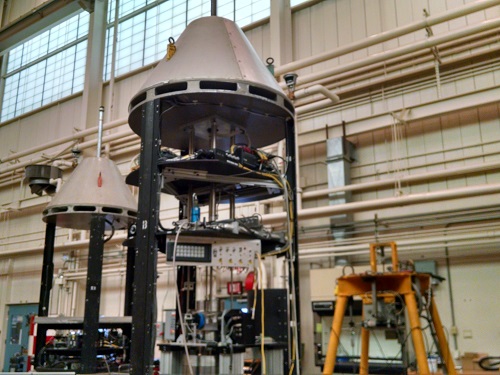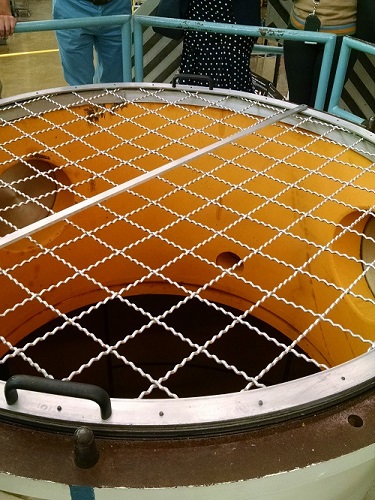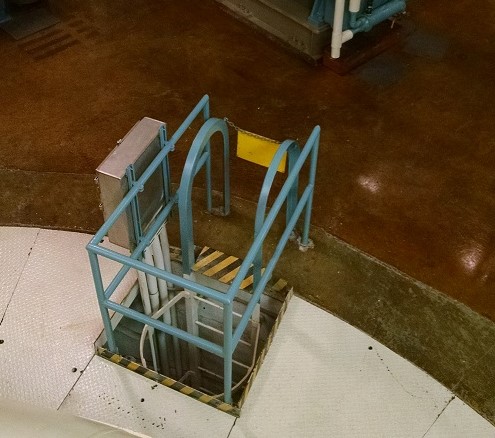One of the most common questions I've been (jokingly) asked about is NASA's zero gravity facility. I'm posting this today to tell you that NASA really does have a zero-g research building, and all the interns got the chance to "drop" by this week.

First, some science. Zero gravity facilities are typically very tall towers evacuated of nearly all air. For reference, the Earth's atmosphere comfortably resides at 760 torr of pressure. Researchers reduce the zero gravity tower to less than 0.1 torr. No pressure!
Next, the researchers place the experiment for zero-g testing inside a large capsule (known as a drop vehicle) and drop it from the top of the tower. This simulates a feeling of weightlessness - much like you might have felt at the top of a roller coaster! All together, the decreased pressure and drop result in a simulated zero-gravity effect.


The NASA Glenn Research Center's zero gravity drop tower was built in 1966 and is still the largest drop tower in the world. Although it's called a tower, most of the structure is deep in the ground. It extends 510 feet below the earth (for reference, the Washington Monument is 550 feet tall) and provides 5.18 seconds of zero-gravity. You'd be surprised at how much a scientist can measure in five seconds!


So what kind of experiments go inside the drop tower? Of course, most of the research in the zero-g facility relates directly to space travel and survival. Researchers at the facility test the performance of hardware designed for missions aboard the International Space Station and other spacecraft. Some of the experiments are a little stranger, though. The zero-g's weirdest experiment? Testing the combustion of human hair. Thanks, NASA.